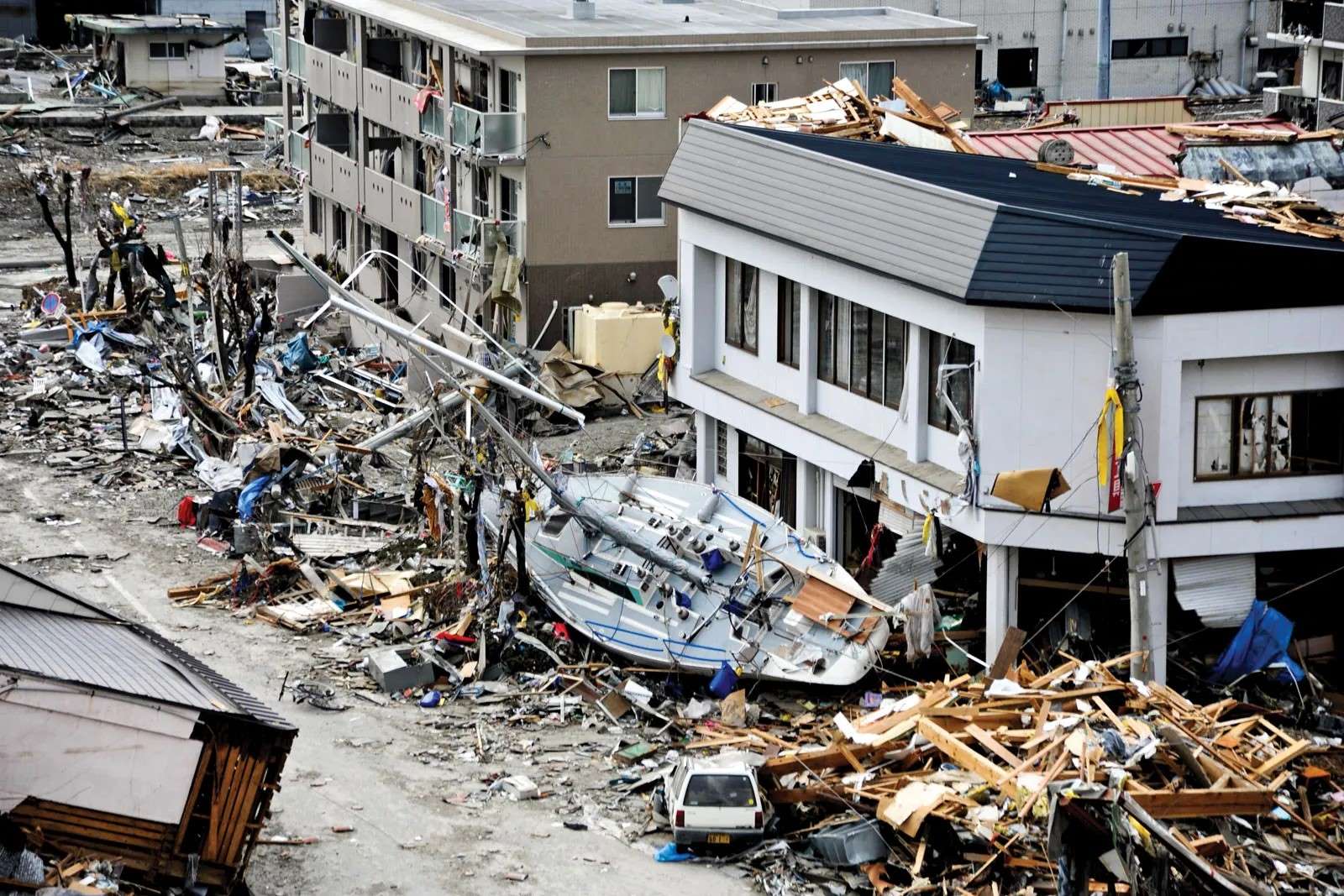
Why does Japan experience so many earthquakes? Japan sits on the Pacific Ring of Fire, where multiple tectonic plates converge. This unique location makes it one of the most seismically active countries in the world. Japan experiences around 1,500 earthquakes annually, with some reaching magnitudes of 6.5 or higher. The 2011 Tohoku earthquake, a magnitude 9.0 event, triggered a devastating tsunami and nuclear disaster, highlighting the country's vulnerability. Despite advanced early warning systems and stringent building codes, recent events like the 2024 Noto earthquake show that Japan remains at constant risk. Understanding these seismic activities is crucial for preparedness and resilience.
Key Takeaways:
- Japan experiences about 1,500 earthquakes every year, with some reaching a magnitude of 6.5 or higher. The 2011 Tohoku earthquake and tsunami had a significant impact on Japan and the world.
- Earthquakes in Japan can cause lasting effects, such as shifting the Earth's axis and altering coastlines. The country's preparedness and response to earthquakes are crucial for minimizing damage and saving lives.
Japan's Seismic Activity
Japan sits on the Pacific Ring of Fire, making it one of the most earthquake-prone countries in the world. This unique geography results in frequent seismic events.
- Frequency of Earthquakes: Japan experiences about 1,500 earthquakes annually, with most being minor shocks of magnitude 3.9 or less.
- Magnitude 6.5 and Higher: Magnitude 6.5 or higher earthquakes occur almost every year in Japan, sometimes multiple times.
The 2011 Tohoku Earthquake
The 2011 Tohoku earthquake, also known as the Great East Japan Earthquake, was one of the most devastating natural disasters in recent history.
- 2011 Tohoku Earthquake: The 2011 Tohoku earthquake was a magnitude 9.0 earthquake that struck off Japan’s northeastern coast on March 11, 2011.
- Tsunami Impact: The earthquake triggered a massive tsunami that flooded over 200 square miles of coastal land, with waves reaching as high as 38 meters (128 feet).
- Casualties: The disaster resulted in an estimated 20,000 deaths or missing persons, with nearly 90% of deaths attributed to drowning during the tsunami.
- Economic Loss: The direct economic loss from the earthquake, tsunami, and nuclear disaster is estimated at $360 billion, making it the costliest disaster to date.
- Nuclear Emergency: The Fukushima Daiichi Nuclear Power Plant cooling system was damaged, leading to a nuclear emergency and subsequent meltdown.
Earthquake Effects on the Planet
Earthquakes can have far-reaching effects, even altering the planet itself.
- Earthquake Shift: The 2011 Tohoku earthquake shifted the Earth on its axis by redistributing mass, similar to putting a dent in a spinning top.
- Day Shortening: The earthquake shortened the length of a day by about a microsecond due to the redistribution of mass.
- Aftershocks: Over 5,000 aftershocks occurred in the year following the main earthquake, with the largest aftershock reaching a magnitude of 7.9.
- Coastal Drop: Approximately 250 miles (400 km) of Japan’s northern Honshu coastline dropped by 2 feet (0.6 meters) due to the earthquake.
- Island Movement: The main island of Honshu moved eastward by 8 feet (2.4 meters) as a result of the earthquake.
- Plate Movement: The Pacific Plate slid westward near the epicenter by 79 feet (24 meters).
Global Impact and Historical Context
The effects of Japan's earthquakes are felt worldwide, and the country has a long history of seismic activity.
- Global Impact: The seismic waves from the earthquake were felt as far away as China, Taiwan, and Russia, and even affected Antarctica’s ice streams.
- Tsunami Debris: Tsunami debris continued to wash up on North American beaches years after the disaster.
- Forecasting Failures: Despite warnings from Japanese geologists, the 2011 Tohoku earthquake and tsunami caught many officials off guard, highlighting the need for better earthquake hazard assessments.
- Historical Tsunamis: The areas flooded in 2011 closely matched those of a tsunami that hit Sendai in A.D. 869, indicating a long history of seismic activity in the region.
Psychological and Social Impact
The aftermath of earthquakes can have profound effects on mental health and community cohesion.
- Post-Disaster Screening: After the 2011 earthquake, mental health screenings were conducted to assess post-traumatic stress disorder (PTSD) symptoms among affected citizens. Over a quarter of respondents met criteria for probable PTSD.
- Community Impact: The earthquake and tsunami led to a significant loss of sense of community among survivors, which was related to PTSD symptoms.
Reconstruction and Displacement
Rebuilding after a major earthquake is a long and complex process.
- Reconstruction Efforts: The Japanese government formed a cabinet-level reconstruction agency and approved a 10-year timeframe for reconstruction. The basic disaster management plan was amended to better prepare for multi-hazard, high-impact events.
- Displacement Numbers: By 2012, about three-quarters of the estimated 470,000 people displaced by the earthquake, tsunami, and nuclear disaster were still displaced.
- Temporary Housing: As of 2016, approximately 174,000 people remained displaced, with 60,800 still living in temporary housing.
International Response and Preparedness
Japan's earthquakes often require international aid and highlight the importance of preparedness.
- International Response: The 2011 Tohoku earthquake and tsunami required an international response due to the overwhelming damage and humanitarian needs.
- Early Warning Systems: Japan has one of the most advanced earthquake early warning systems globally, which helped mitigate some of the damage.
- Tsunami Height Records: The 2011 tsunami reached staggering heights of up to 40 meters in some areas, making it one of the most powerful tsunamis in recorded history.
- Coastal Communities: The sheer force of the tsunami waves left coastal communities in ruins, with entire communities inundated by the raging waters.
Recent Seismic Activity
Japan continues to experience significant seismic events, including the ongoing activity in the Noto Peninsula.
- Foreshocks: There were foreshocks prior to the main earthquake, which were felt as far away as China, Taiwan, and Russia.
- Aftershocks Pattern: The Noto Peninsula has been experiencing an ongoing seismic swarm since late 2020, with many earthquakes within a relatively small area that don’t fit a ‘mainshock-aftershock’ pattern.
- Noto Earthquake (2024): A 7.5/7.6 magnitude earthquake occurred on January 1, 2024, in the Ishikawa Prefecture near the northern coast of Japan’s Noto Peninsula.
- Aftershocks and Cascading Hazards: Hundreds of aftershocks were recorded in the week after the Noto earthquake, along with several cascading hazards including landslides, fires, geological uplift, tsunamis, and liquefaction.
- Coastal Uplift: The earthquake’s intense uplift extended the coastline by up to 820 feet (250 meters), which is greater than the length of two American football fields.
- Tsunami Impact (2024): Tsunamis prompted by the Noto earthquake reached heights of 16 to 47 inches in towns along the coast, flooding at least 296 acres (120 hectares) of land.
- Landslides: Almost 1,000 landslides related to the quake affected fewer than 100 buildings but blocked roads and rivers, isolated villages, delayed recovery, and increased the risk of future landslides.
Building Stability and Disaster Preparedness
Building stability and disaster preparedness are crucial in minimizing the damage caused by earthquakes.
- Seismic Swarm: The Noto Peninsula has been experiencing an ongoing seismic swarm since late 2020, with earthquakes ranging in strength from M4.0 to M6.3 in 2023.
- Building Stability: The common expression, “earthquakes don’t kill people, buildings do,” highlights the critical role building stability plays during an earthquake. Japan introduced regulations to protect buildings from earthquakes in 1981.
- Disaster Preparedness: Japan is known for its disaster preparedness, with investments, mandates, and engineering practices adapted to seismic risk saving lives during past earthquakes. However, many buildings in affected areas may not have been built to withstand strong earthquakes.
- Traditional Wooden Homes: Many traditional wooden homes in Wajima collapsed during the 2024 Noto earthquake, highlighting the need for better construction practices in earthquake-prone areas.
Casualties and Recovery Efforts
The human toll and recovery efforts following earthquakes are significant and ongoing.
- Casualties (2024): As of August 21, 2024, 281 direct and indirect deaths had been confirmed, with almost 600 people injured. Only two deaths were connected to tsunamis, reflecting Japan’s improved awareness of these hazards.
- Indirect Deaths: Several deaths were caused by hypothermia due to harsh winter conditions in the Noto region. At least 30 deaths were indirectly related to the earthquake, attributed to emotional shock, harsh living conditions at evacuation centers, and delayed primary care.
- Recovery Efforts: To deal with the housing crisis, local governments rented temporary housing. The Ishikawa Prefectural Government implemented measures to address the ongoing seismic activity and support affected communities.
Japan's Seismic Reality
Japan's unique position on the Pacific Ring of Fire makes it one of the most seismically active countries. With around 1,500 earthquakes annually, the nation constantly faces the threat of natural disasters. The 2011 Tohoku earthquake and tsunami highlighted the devastating potential of these events, causing massive loss of life, economic damage, and a nuclear crisis. Recent events like the 2024 Noto earthquake show that seismic activity remains a significant concern.
Japan's advanced early warning systems, stringent building regulations, and robust disaster preparedness measures have saved countless lives. However, ongoing challenges, such as the displacement of thousands and the need for better construction practices, underscore the importance of continuous improvement.
Understanding Japan's seismic reality is crucial for appreciating the resilience and preparedness of its people. The lessons learned from past earthquakes will undoubtedly shape future strategies to mitigate the impact of these inevitable natural events.
Frequently Asked Questions
Was this page helpful?
Our commitment to delivering trustworthy and engaging content is at the heart of what we do. Each fact on our site is contributed by real users like you, bringing a wealth of diverse insights and information. To ensure the highest standards of accuracy and reliability, our dedicated editors meticulously review each submission. This process guarantees that the facts we share are not only fascinating but also credible. Trust in our commitment to quality and authenticity as you explore and learn with us.


